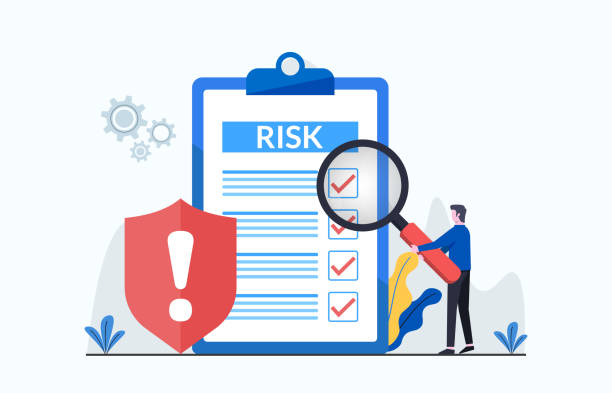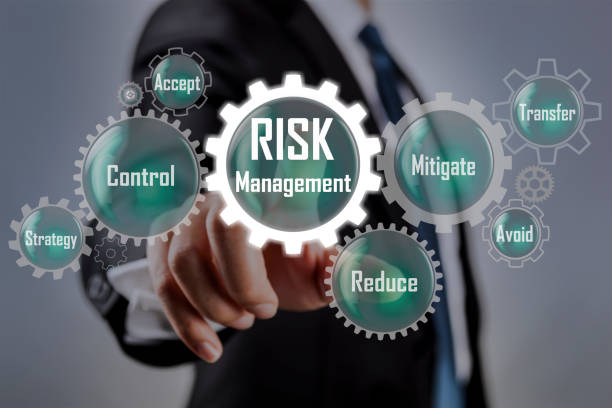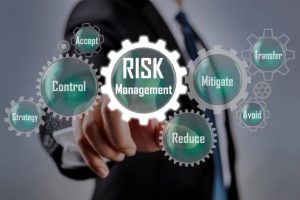Risk management is an essential part of any business. By having a well-developed risk management strategy, organizations can reduce the likelihood and cost associated with unexpected events. This article will discuss the importance of developing effective risk management strategies.
The first paragraph will provide an overview of what risk management entails and how it should be incorporated into organizational objectives. The second paragraph will explain why risk management is important for businesses and the third paragraph will outline different approaches to managing risks.
Risk management involves recognizing, assessing, and responding to potential sources of harm in order to minimize their impact on an organization’s operations and financial performance. It includes identifying exposure to lose, determining ways to manage that exposure, monitoring progress toward reducing those exposures, and taking corrective action when necessary. When properly implemented, a successful risk management system helps protect profits by preventing or minimizing losses due to unforeseen circumstances such as natural disasters or litigation costs.
Definition
The concept of risk management is a vital part of any successful business. According to the U.S. Small Business Administration, more than 90% of small businesses fail within their first 5 years due to a lack of proper risk management strategies (U.S. SBA). Thus, it is essential for organizations to understand what constitutes ‘risk’, and how risks can be managed in order to ensure long-term success and profitability.
Risk management is a process that involves assessing potential risks, controlling them by taking preventive measures, evaluating these controls, and updating them when necessary. Risk assessment entails analyzing data from both internal sources such as past financial statements or company records as well as external resources such as market research reports or industry trends (Myers et al., 2020). It includes understanding the nature and scope of the risks, estimating their likelihood and impacts, assigning appropriate response plans, and creating contingency plans in case those responses are not adequate enough (Gallegos & Karmelich, 2018).
On the other hand, risk control requires the identification of suitable tools that can mitigate the effects of various types of identified risks (Kerzner & Kerzner 2019). These tools include insurance policies, training programs for employees, or setting up formal protocols on policies related to health safety, etc., which help reduce uncertainty related to major losses caused by unexpected events. Finally, an effective evaluation system should also be in place so that measurements taken against certain kinds of risks are monitored regularly and updated according to changing conditions (Borle & Belbase 2021).
In sum then, risk management comprises four distinct stages: definition, assessment, control, and evaluation; each stage builds upon one another in order for organizations to identify potential threats that may impede progress toward achieving organizational goals. With this knowledge about identifying risk factors established through careful analysis at all levels throughout an organization’s operational structure, we now turn our attention toward uncovering specific types of risks…
Identifying Risks
Identifying risks is the first step in developing an effective risk management strategy. This involves identifying all potential risks that can affect a business or organization and their likelihood of occurring. Risk identification should be done through careful analysis, taking into account both internal sources such as financial statements or past performance records, as well as external factors like market trends or industry developments. It is important to note that the risk assessment process must include not only quantitative data but also qualitative information such as customer feedback or supplier relations (Myers et al., 2020).
Once these risks have been identified, they can then be evaluated using various tools including probability-impact matrices, decision trees, and Monte Carlo simulations (Kerzner & Kerzner 2019). These techniques allow organizations to determine how likely certain events are to occur, their possible effects on operations and finances, and the best ways to mitigate them. For example, if the risk of theft were identified by a company’s security department, it could use a decision tree model to assess its impact on production costs and profits in order to decide whether additional security measures need to be implemented or not. Additionally, Monte Carlo simulations enable businesses to simulate multiple scenarios based on different variables so that accurate predictions about future outcomes can be made (Gallegos & Karmelich 2018).

Risk identification is thus essential for any successful risk management strategy since it allows organizations to recognize potential threats before they become serious problems. After this initial step has been completed effectively, companies can move on to the next stage: analyzing risks.
Analyzing Risks
Having identified all potential risks, the next step in creating a risk management strategy is to analyze them. Risk analysis involves assessing each individual threat and its associated likelihood of occurring (Kerzner & Kerzner 2019). This helps organizations better understand the nature of the risks they face so that they can make informed decisions about how to mitigate them.
Risk assessment is then used to evaluate the impact of different threats on an organization’s operations or finances (Myers et al., 2020). By combining quantitative data such as past performance records with qualitative information like customer feedback or supplier relations, companies can gain insight into which risks should be prioritized for action. For example, if a company determines that theft could have severe financial consequences, it may decide to invest more heavily in security measures than other less serious issues.
The combination of risk identification and assessment is essential for any successful risk management strategy since it allows businesses to accurately measure their exposure and develop effective strategies for mitigating potential losses. Having understood the scope of their risks, organizations can now move onto the next stage: prioritizing them.
Prioritizing Risks
Having understood the scope of their risks, organizations can now prioritize them. Risk prioritization is an important step in any risk management strategy since it enables businesses to focus on the most pressing threats and allocate resources accordingly (Myers et al., 2020). This should be done by assigning each risk a priority level based on its severity, likelihood of occurrence, and potential impact on operations or finances.
Risk categorization is also useful for determining which actions need to be taken first (Kerzner & Kerzner 2019). For example, high-priority risks may require immediate attention while low-priority ones can be addressed at a later date. Additionally, risk mitigations such as insurance policies or backup systems may help reduce exposure to certain types of risks.

Overall, prioritizing and categorizing potential threats allows companies to focus their efforts where they are needed most and develop effective strategies for mitigating losses due to unforeseen events. By taking these steps into account during the planning stage, businesses will be better prepared if an incident occurs in the future. With this knowledge in hand, organizations can move on to implementing strategies that address identified risks.
Implementing Strategies
Having identified and prioritized risks, organizations can now implement strategies to mitigate them. Risk implementation involves developing a plan of action for responding to threats that have been identified in the risk assessment process (Myers et al., 2020). This includes creating both preventative measures as well as contingency plans for when incidents do occur.
The first step is determining an appropriate response strategy. Organizations should consider all available options such as avoidance, transfer, reduction, or acceptance of losses (Kerzner & Kerzner 2019). Depending on the situation, different approaches may be necessary; for example, high-priority risks may require more expensive solutions while low-priority ones could be addressed with simpler methods. Once this decision has been made, the next step is to evaluate its effectiveness by conducting regular reviews and making any necessary adjustments.
Finally, organizations must ensure that these strategies are properly implemented throughout their operations. This requires providing staff with adequate training, resources, and support so they understand how best to respond if a risk event occurs (Myers et al., 2020). By taking these steps into account during the planning stage, businesses will be better prepared when faced with unforeseen events in the future.
Contingency Planning
Contingency planning is an important part of risk management strategies, providing organizations with the ability to prepare for and mitigate risks. This involves developing plans that detail how they will respond if a risk event occurs (Myers et al., 2020). These plans should include:
By having contingency plans in place prior to any incident, organizations are better able to reduce losses by quickly responding appropriately (Kerzner & Kerzner 2019). Additionally, having this information readily available can help alleviate stress on employees during times of crisis since they will have guidance on how best to proceed. Ultimately, through effective contingency planning organizations can be more proactive when faced with unexpected events allowing them to minimize disruption and maximize effectiveness. Steadfast preparation is key for ensuring successful disaster recovery; thus, it is essential for businesses to create comprehensive disaster recovery plans.
Disaster Recovery Plan
Disaster recovery planning is an important element of risk management strategies. This involves developing plans that detail how organizations will deal with unexpected events such as natural disasters or power outages (Myers et al., 2020). Such plans should include:
Having comprehensive disaster recovery plans in place enables businesses to be better equipped to respond quickly in times of crisis. It also reduces uncertainty among staff members since they will have guidance on what steps need to be taken during an emergency situation. By taking proactive measures through proper preparation, companies can ensure their operations remain uninterrupted. Effective communication between stakeholders is essential for successful disaster recovery; thus, organizations must create communication plans prior to any incident occurring.
Communication Plans
Creating a communication plan is an integral part of developing an effective risk management strategy. Risk communication involves informing stakeholders in advance about the risks associated with operations and how they will be addressed (Ahmad et al., 2020). It also includes outlining roles, responsibilities, expected outcomes, and timelines for each element of the planning process. Communication plans should include clear guidelines on how to disseminate information internally as well as externally, such as through newsletters or other media outlets.
In addition to providing clarity on who needs to be informed and when these plans can help organizations manage expectations by setting forth realistic goals that are achievable within a given timeframe. By establishing appropriate levels of transparency early on in the risk management process, companies ensure that all stakeholders have access to timely updates which helps them make sound decisions going forward. Furthermore, it allows employees to act quickly if any changes need to be made throughout the duration of the project.
Effective risk communication is essential for the successful implementation of any management strategy; thus, creating comprehensive communication plans beforehand is absolutely necessary. Companies must take into account their organizational culture and structure while crafting these plans so that everyone has access to relevant information at all times during the planning process.
Monitoring Progress
Monitoring progress is an important part of developing risk management strategies. Assessing and evaluating the effectiveness of risk mitigation measures in place helps organizations ensure that their strategies are working as intended. There are two main components to this process: tracking performance indicators and conducting regular reviews.
Tracking Performance Indicators: Organizations should track key performance indicators (KPIs) related to their risk management strategy in order to measure its success or failure over time. The KPIs used will depend on the type of risks being managed; for example, financial institutions may monitor credit default swaps while healthcare providers may look at patient safety incidents. By collecting data from various sources and monitoring these metrics regularly, companies can quickly identify any trends or issues so they can adjust their strategies accordingly.

Conduct Regular Reviews: In addition to tracking performance indicators, it is also essential to conduct regular review sessions with stakeholders in order to assess the current status of the strategy and make changes as needed. These meetings provide a platform for open dialogue between all parties involved and offer opportunities to discuss potential risks, evaluate progress toward goals, and suggest improvements where appropriate. Furthermore, it allows leaders to take stock of any new developments or challenges that have arisen since the last session and make necessary adjustments before proceeding further.
By combining both aspects of this process – tracking performance indicators and holding periodic reviews – organizations can ensure that their risk management strategies remain effective over time by continuously assessing progress, identifying areas needing improvement, and making timely adjustments as required.
Reporting & Review
Once performance metrics have been tracked and regular reviews held, the next step in developing risk management strategies is to report on progress and review findings. Risk reporting and review allow organizations to draw conclusions about the effectiveness of their strategy by assessing data collected from various sources, evaluating risks that were identified during meetings, and analyzing current trends or issues. This process helps ensure all stakeholders are aware of any changes that need to be made, as well as allows leaders to make informed decisions when formulating future plans.
Risk reporting should provide a comprehensive overview of the organization’s risk status at a given point in time; this includes information such as internal/external threats being managed, performance against KPIs, control weaknesses detected during assessments, and actions taken since the previous report. By creating an up-to-date picture of where the company stands with regard to its risk management efforts, executives can quickly identify areas needing improvement or additional resources allocated.
Finally, it is important for organizations to conduct regular management reviews so they can reassess goals related to their strategy if necessary and make adjustments based on new developments or changing conditions. These sessions also give stakeholders an opportunity to discuss potential solutions for any challenges encountered thus far and agree upon a course of action going forward. With effective communication among all parties involved, companies can use these reviews to refine existing strategies while ensuring they remain aligned with overall business objectives.
Frequently Asked Questions
It is undeniable that stakeholder engagement plays a hugely important role in the development and review of risk management strategies. In this age of increasing complexity, it has become paramount for organizations to stay ahead by involving stakeholders in the strategy formation and implementation process. With an aim at successful risk mitigation, engaging stakeholders can provide invaluable insights into potential risks and offer creative solutions.
By actively participating in strategy development and review processes, stakeholders could be instrumental in locating loopholes or identifying areas where existing strategies may not work optimally. They bring unique perspectives from different backgrounds that are critical for effective decision-making during times of crisis. As such, understanding their interests as well as any constraints they might have should form the basis for developing sound risk management strategies.
Furthermore, strategic communication with stakeholders serves two purposes: firstly, it ensures transparency which enhances trust among all parties involved; secondly, it keeps everyone on the same page regarding objectives and goals set out by the organization. Such measures go a long way towards creating an environment conducive to collaborating through meaningful dialogue about how best to prevent or manage expected risks associated with operations.
Given its importance, businesses must create opportunities for meaningful stakeholder engagement if they are to achieve success in today’s competitive marketplaces. It requires proactive steps like regular interaction between various teams within the organization while going beyond traditional methods like surveys and questionnaires to identify issues faced by them that need resolution. Only then can firms move away from reactive approaches towards building sustainable partnerships with their key stakeholders over time.
Identifying and analyzing risk is an important part of any successful risk management strategy. An effective approach to doing this requires the use of various techniques such as risk assessment, risk analysis, risk identification, risk mitigation, and risk evaluation. By engaging in these processes organizations can develop a comprehensive understanding of their risks that goes beyond surface-level observations.
When it comes to identifying and analyzing risks there are several key steps that should be taken into consideration. The first step is to identify potential sources of danger or harm within the organization’s environment by conducting a thorough review of available data. Once identified, appropriate measures should be implemented to mitigate or reduce the probability or severity of those risks occurring. Additionally, specific objectives must be established for each identified source of risk so that accurate evaluations can take place.
To further enhance the effectiveness of an organization’s ability to manage its exposures through proper identification and analysis, some helpful tools include:
1) Utilizing scenario planning;
2) Establishing performance metrics;
3) Developing procedures for ongoing monitoring and reporting systemically on all aspects related to the management of their respective areas of exposure. This will help ensure that organizations remain informed about changes in their operating environments while also providing them with necessary insight when making decisions regarding future investments or operations activities. In addition, having clear policies around acceptable levels of exposure helps maintain consistency across the entire enterprise which improves overall organizational resilience.
By leveraging best practices for properly assessing and evaluating threats along with implementing tailored solutions based on individual needs, organizations can gain assurance that they have adequately addressed their most pressing concerns from both a financial and operational standpoint. With improved visibility into existing issues through enhanced identification and analysis capabilities companies position themselves better for success in today’s highly competitive marketplaces.
Risk management strategies are essential for any organization, as it helps identify and manage potential risks that may arise. As such, how often should risk management strategies be reviewed and updated? This is an important question to consider when developing a comprehensive risk assessment plan.
Regular reviews of existing risk management strategies provide the opportunity to assess whether they remain relevant in light of changing circumstances. Risk assessments need to be tailored to each individual business environment, so regular review allows organizations to ensure their plans are up-to-date with current trends and industry developments. Additionally, reassessing risk mitigation methods can help organizations prepare for emerging threats and hazards.
Organizations should set key milestones in order to keep track of their progress in assessing and mitigating risks associated with specific objectives or activities. These benchmarks can serve as indicators for when it’s time to review the overall strategy again. Depending on the nature of the project or activity being managed, these reviews could take place every few months or several times per year. It’s also important for businesses to document all changes made throughout this process; having a detailed record will help them stay organized and efficient while managing risks over time.
TIP: Having executive-level support is integral for the successful implementation of any risk management plan. Without adequate buy-in from higher-ups within the organization, efforts taken by lower levels may become undermined or delayed due to other priorities taking precedence. It’s crucial that those at the top understand why implementing these measures matters before attempting to move forward with updates and revisions.
Prioritizing risk management strategies is a critical component of successful implementation. In order to prioritize effectively, stakeholders must be engaged in the process, and appropriate analysis techniques employed. Several criteria are essential when it comes to determining which risks should be addressed first, including an assessment of potential impact as well as cost-benefit considerations. Furthermore, communication techniques such as stakeholder engagement can help inform decision-making and ensure that all affected parties are properly represented.
Risk prioritization requires an understanding of the overall strategy review so that decisions made in relation to individual risks align with the desired outcome for the organization or business unit. Risk analysis can provide insight into how different types of risks interact, although this will depend on the specific objectives of each strategy review. Discussions among relevant stakeholders can also reveal where changes may need to be made in order to improve performance or reduce costs associated with implementation.
In addition, incorporating feedback from stakeholders can further refine risk prioritization decisions by introducing new perspectives and highlighting areas not initially considered. This kind of information gathering is important because it allows organizations to identify issues before they become significant problems and take steps to minimize their impact. Businesses should therefore examine all available resources when assessing risks and develop solutions accordingly based on their goals and objectives.
Developing a successful risk management strategy is essential for any business. According to the 2019 Financial Risk Management survey, 97% of organizations now have dedicated departments responsible for managing risks and ensuring compliance with regulatory standards. With this in mind, it is important that businesses consider how their risk management strategies can be effectively communicated across an organization and to stakeholders.
The process begins by understanding who needs to receive the information on risk management within the organization. This could include senior leaders such as board members or heads of departments, as well as employees at all levels. It is also necessary to think about external stakeholders including customers and suppliers who may need to be informed about changes in order for them to remain compliant too.
Once these groups are identified, tailored communications should be created for each one using language that is easy to understand and accurately conveys the message regarding risk management strategies. Effective communication methods might involve face-to-face meetings or seminars, webinars and videos, emails and newsletters or written documents with checklists outlining processes and procedures. The success of communicating risk management strategies will depend upon having appropriate training available so that everyone understands what they need to do when implementing new policies or procedures associated with the strategy.
By taking into account who needs to receive the message, tailoring content accordingly, utilizing various channels of communication, and providing clear instructions on implementation – businesses can ensure their risk management strategies are understood throughout their organization as well as externally by relevant stakeholders.
Conclusion
The importance of developing effective risk management strategies cannot be overstated. It is essential that organizations take a comprehensive approach to managing risks in order to ensure long-term success and growth. To effectively engage stakeholders, it is important to provide them with clear objectives and expectations as well as an understanding of the potential risks they may face. Additionally, techniques such as brainstorming, interviews, surveys, data analysis, and simulations can help identify and analyze specific areas of risk within an organization. Risk management strategies should also be regularly reviewed and updated to stay abreast of changing conditions and priorities. Prioritizing these strategies requires taking into account factors such as the cost/benefit ratio, the likelihood of occurrence, the severity of impact, urgency or timeliness, and the ability to control or mitigate the risk. Finally, communication is key; without proper dissemination throughout the organization, any strategy will remain on paper only – like a ship adrift at sea without its navigational charts. As such, it is imperative that all levels of personnel understand the implications associated with various courses of action when it comes to their roles in achieving organizational goals while mitigating potential risks along the way. In short, sound risk management strategies are akin to a reliable map for navigating through treacherous waters – providing clarity in uncertain times so that organizations can weather storms more easily and ultimately reach their desired destination safely.



